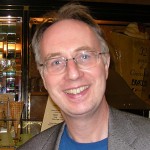When I was at school we always looked forward to chemistry lessons because we could blow things up and set fire to stuff, which was the opposite to the rest of the curriculum, where such activities would have you brought before the headmaster and disciplined or even expelled. Now education is more sedate, not to mention safety-conscious, and children don’t get to personally set off exothermic reactions, or what normal people call fires and explosions.
Science Photo Library, in the interests of science, took over the famous Royal Institution Lecture Theatre in London – which is probably the most famous science lecture theatre in the world, used by great scientists like Faraday and Davy, and filmed at extreme high speed some of the most spectacular reactions in chemistry, including caesium and rubidium in water, nitrogen triiodide, exploding hydrogen bubbles and molten iron.
You can see the showreel here: www.sciencephoto.com/pr/1
There is a serious point to this, it’s not just a jape. The educational market is expanding globally, particularly in the Asia-Pacific region, as there is huge demand for education among the burgeoning middle classes of the area. Also, the delivery mechanisms in education are changing: teachers no longer “chalk and talk” but have access to a panoply of interactive and rich media delivery systems and this has been reflected in a huge upsurge in the need for footage to use in the classroom, on mobile devices and online learning environments.
Ben Jones, Head of Motion at the Science Photo Library, says, “Education sales have gone up dramatically in the last four years: revenue in total has been rising year on year since launch, and much of that rise has been in the digital publishing sector. Electronic book uses alone more than doubled each year from 2010-2011, 2011-2012 and are on track to more than double again this year. Overall, editorial non-broadcast uses of video have seen consistently high and rising demand over the last three years, with more and more clients coming on board every year, more requests coming in and more clips being sent out. We are shooting and commissioning new work to meet demand too, and exploring novel licensing strategies in education with new players making use of new technologies. The signs are good for the rise to continue into next year and beyond.”
With a good DSLR high quality HD footage, as well as stills are available from the same camera, which has made a huge impact on the marketplace as many photographers switch to creating motion clips as well as still images. The easiest transition to creating moving images is time-lapse and many photographers/videographers are using this to create interesting footage clips of systems, whether human or biological, changing over time.
However to create extremely slowed-down images of explosions you still need a dedicated specialist camera. The footage shown above was created by using a 2000 frames-per-second full HD Photron BC2 camera, and had the backup of the Royal Institution’s staff and fire precautions so that the experiments didn’t get out of hand (unlike my school-days, which did come near to starting some serious fires, although unfortunately I failed to burn down the school, which would have meant a day off, possibly with imprisonment afterwards).
Footage is going to be an expanding area for many photo-libraries in the future, whatever their previous way of working, and both the buyers of images and the suppliers will need to change their mode of operation to interact with this ongoing development.
If you want to see the backstage story behind filming the above footage complete with flubs, which looks fun, click here: www.sciencephoto.com/pr/2
Individual clips of slo-mo explosions and fires are here:



